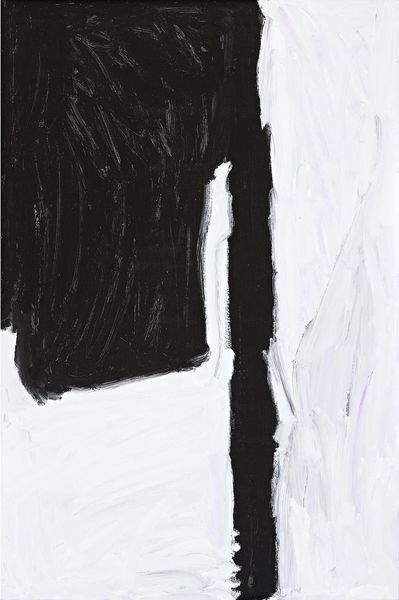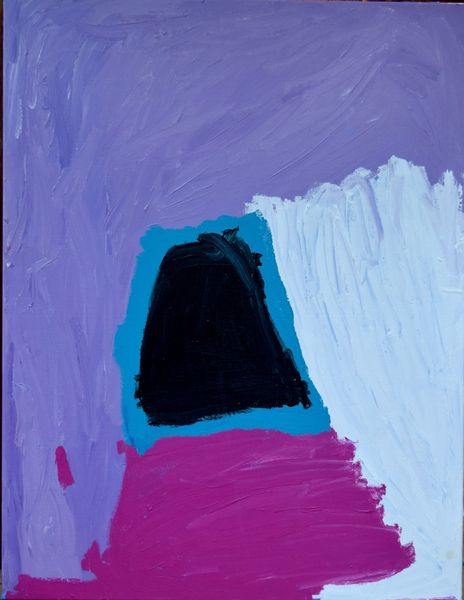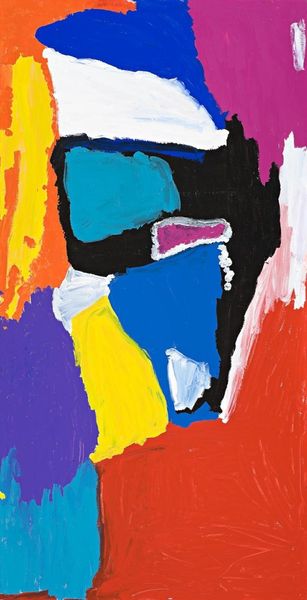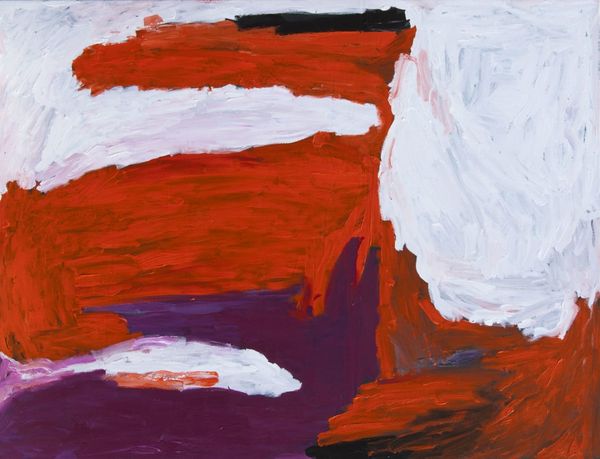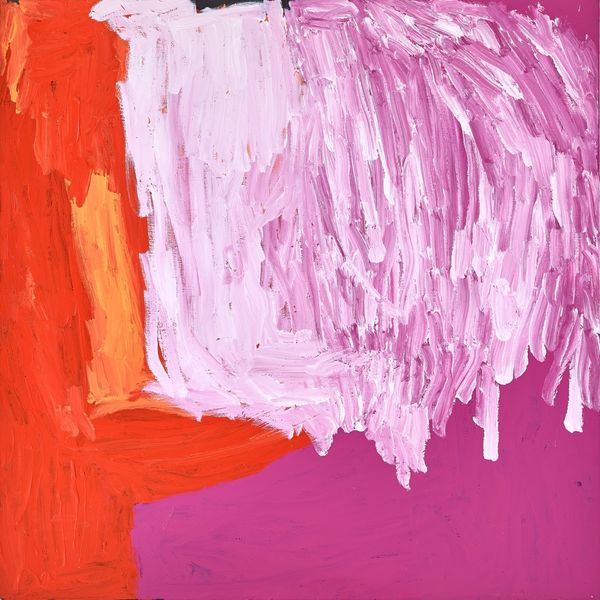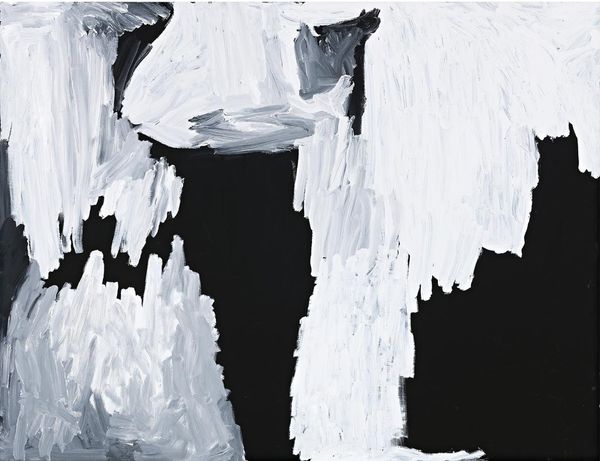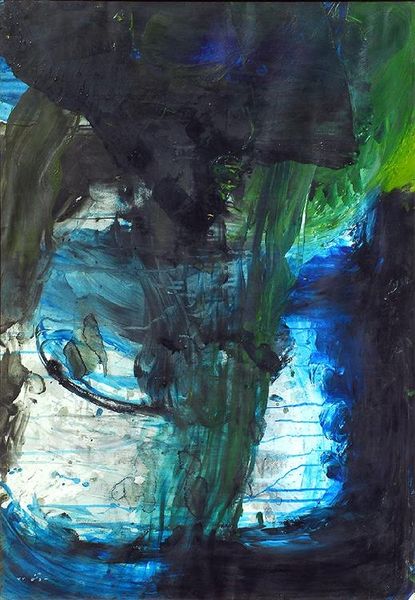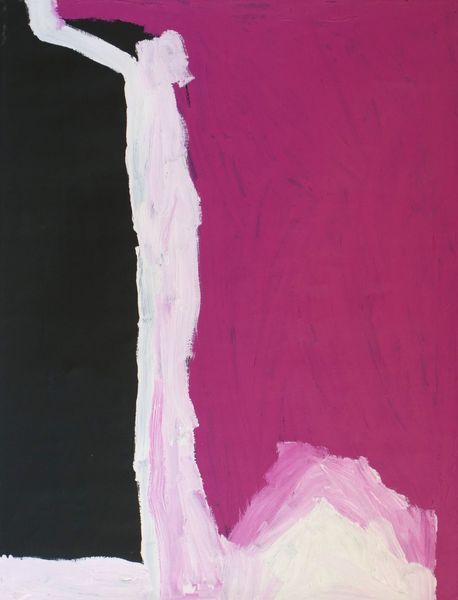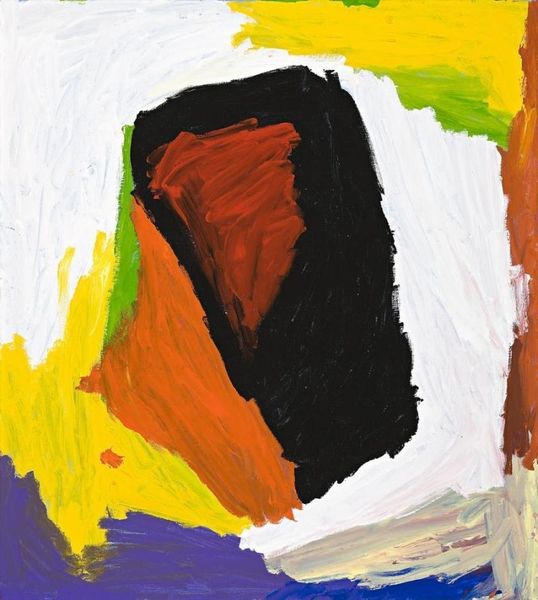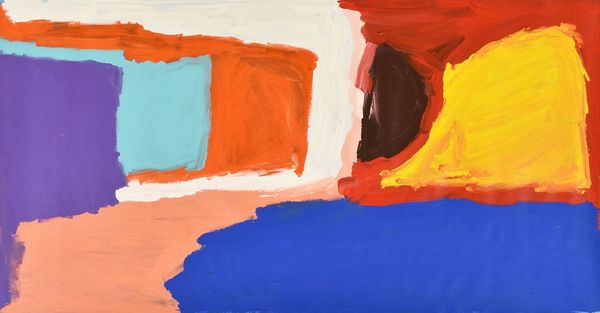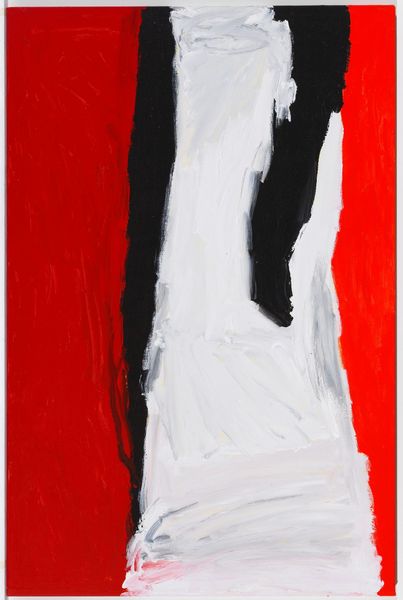
Copyright: Sally Gabori,Fair Use
Editor: Here we have "Dibirdibi Country," painted by Sally Gabori in 2012, using acrylic on canvas. The bold colors and gestural brushstrokes create such a striking presence. What do you see in this piece? Curator: Gabori’s work, particularly “Dibirdibi Country,” presents a fascinating case study in the evolving role of Indigenous art within the contemporary art world. Her vibrant, seemingly abstract landscapes became incredibly popular. How do we reconcile that immediate appeal with the deeper cultural narratives embedded in the work? Editor: So, is the public reception changing the artwork's context? Curator: Precisely. Her paintings depict her homeland, the Kaiadilt Country in the Gulf of Carpentaria. Understanding the history of displacement and resettlement experienced by the Kaiadilt people gives greater depth. The “Dibirdibi Country” is not just colours and shapes; it represents a place, a history, a claim to land. Editor: The composition looks free-flowing, but those colours seem significant. Curator: Colour choices can be particularly telling. Does the bright blue reflect the waters surrounding her Country? And how might her techniques relate to the Western traditions that might shape audiences’ views of her art? Is it merely 'abstract', or is that term limiting? Editor: I see, so framing Gabori's work requires more than just art-historical labels. We also need to discuss her social, cultural, and political environments. Curator: Exactly. Viewing it this way adds richness to appreciating both Gabori's oeuvre, and our understanding of art’s function. Editor: Thanks. Now, looking at Gabori’s work, I will look more carefully for its cultural implications. Curator: Me too! I've definitely learned new angles of viewing this artwork!
Comments
No comments
Be the first to comment and join the conversation on the ultimate creative platform.
